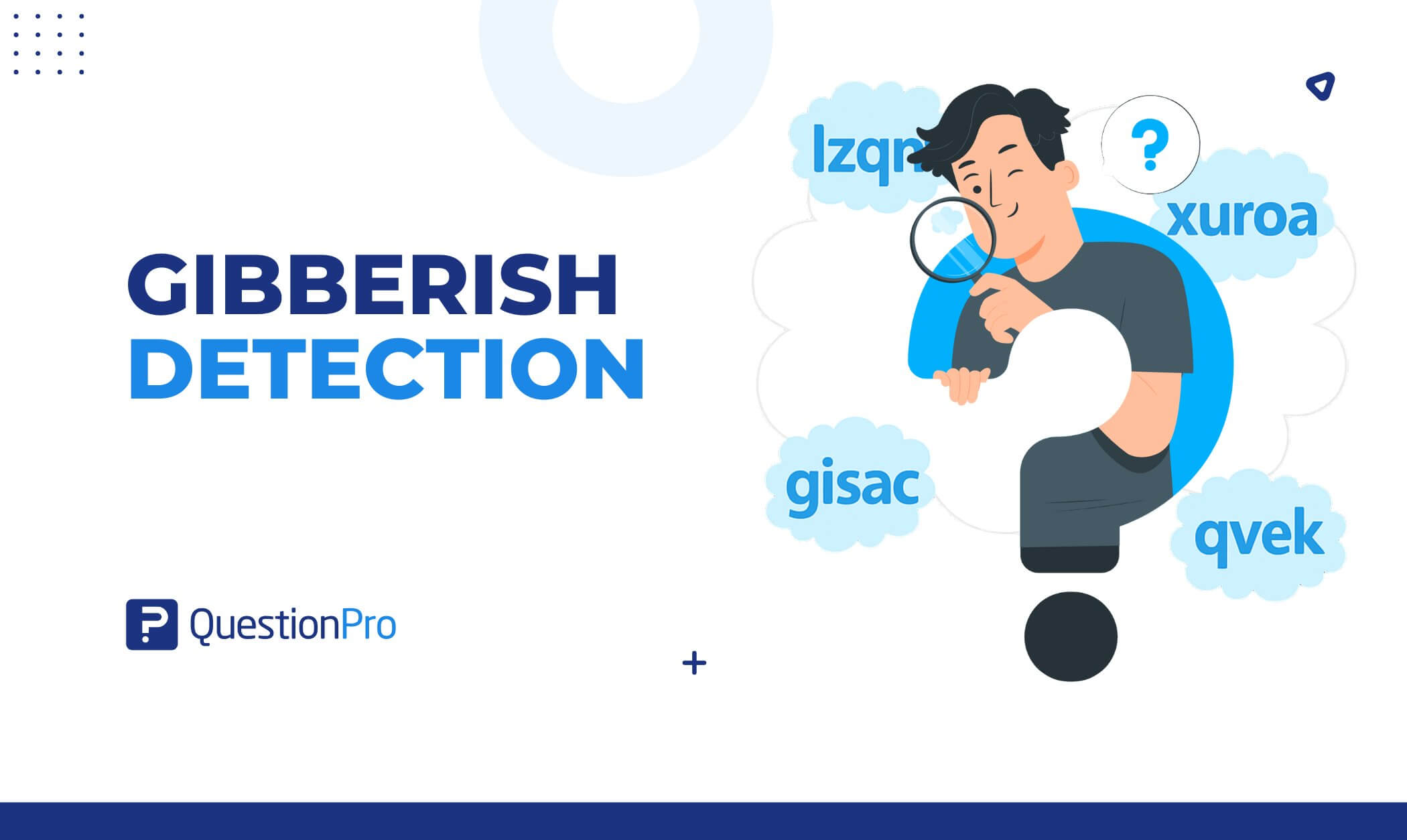
In the rapidly changing environment of market research and insights gathering today, data quality is not a nice-to-have, but a must-have. Brands rely on survey answers to inform decisions that shape product strategy, customer experience, and long-term growth. So, what if responses are filled with nonsensical, irrelevant, or automated text?
One of the quiet threats to survey integrity is gibberish text; nonsense words or random characters that respondents put into a survey to speed through it or to cheat on incentives. These answers not only waste time but also distort your results.
That’s why QuestionPro uses artificial intelligence to help you spot and remove low-quality answers. Our data quality tool includes gibberish detection powered by machine learning, designed specifically to catch these types of responses before they affect your data.
The increasing problem of low-quality survey responses
Market research has grown rapidly with the advent of digital reach, mobile use, and panel sampling. Though this adds greater coverage, it also presents new problems: inattentive responders, dishonest input, and yes, gibberish text.
Gibberish responses occur most frequently in open-ended survey questions, where responders are requested to type out their own words. When these fields are filled with meaningless characters, non-relevant responses, or copied and pasted filler, the validity of your data is jeopardized the moment they are submitted.
Worst of all, such answers are difficult to spot by hand, particularly when conducting surveys at scale. AI, however, is well-positioned to assist.
How QuestionPro AI detects gibberish survey data
Our gibberish words detection module is designed to detect and flag nonsensical inputs in real-time. Armed with natural language processing (NLP) and machine learning, the module analyzes whether a response constitutes organized, human-oriented, structured language or is merely a set of random keystrokes.
Here’s what the AI checks for:
- Consonant or vowel patterns that don’t occur in natural language
- Answers with no semantic meaning
- RNGs of similar characters or nonsense combinations (e.g., “asdkjhasd” or “zxczxczxc”)
- Concise, noninformative answers that don’t satisfy engagement requirements
If an answer is identified as gibberish, it can be flagged for review or automatically deleted, depending on your survey configuration.

This process prevents researchers from spending hours cleaning up post-survey data, ensuring that only high-quality inputs are included in your analysis pipeline.
A real world example of how we used AI to catch fraud in survey responses
At QuestionPro, we take survey quality seriously—and that goes well beyond just catching gibberish responses. In fact, we’ve built a multi-layered system to detect and prevent survey fraud using AI and machine learning.
In a recent case with J4U, a U.S. panel provider, we used our tools to identify a wave of fraudulent survey responses. The issue wasn’t obvious at first glance, but our system flagged suspicious patterns like repeated IP addresses, bots, and nonsensical open-ended answers. You can read the full breakdown in our blog on survey fraud detection.
Gibberish detection was a key part of the solution. Alongside speed checks, duplicate tracking, bot identification, and attention-check questions, the gibberish module added another important layer—language validation. It helped confirm whether open-ended responses were real, relevant, and human.
This isn’t just a theoretical approach. It’s something our customers rely on every day to ensure their research results are clean and trustworthy.
Why gibberish detection is important for market research
In market research, a single bad data point can skew a trend line. Ten bad data points can ruin your analysis. That’s why gibberish detection, powered by automation, is so effective.
Top benefits for researchers:
- Improved segmentation: Reliable verbatim comments enhance persona profiles and qualitative analysis.
- Intelligent decisions: Clean, open-ended answers enable thematic coding, text analytics, and AI-based sentiment tracking.
- Increased trust among stakeholders: Business leaders are more likely to take action based on findings supported by defendable, high-quality data.
- Lower costs: Less time spent cleaning data manually or re-fielding surveys translates into more money for value-added research.
A larger data quality platform
Gibberish detection is only one component of QuestionPro’s data quality platform. Our products help researchers maintain quality throughout every step, from survey design to response review and analysis.
Some of the other modules included in the data quality feature set are:
- Speed traps to identify too-fast or too-slow responders
- Patterned responses detection for matrix-type answers
- One-word answer flags for disengaged text box entries
- Duplicate response detection to stop copy-paste habits
- Bot and AI detection to recognize automated entries from non-human sources
All these tools collaborate to ensure that your final dataset is not only voluminous but also significant.
How to enable gibberish detection in your survey on QuestionPro
How to get started with QuestionPro’s gibberish detection is easy:
- Access your survey settings.
- Head over to data quality.
- Activate the gibberish words module.
- Personalize your rules to suit your research requirements.
You can opt to flag, automatically remove, or indicate for human review. The flexibility allows your quality thresholds to align with your research environment—academic, commercial, or panel-based.
You can view our help file on gibberish detection to set up your data quality module on your surveys.
Ready to improve your data quality?
Visit our gibberish detection help guide to learn how to activate this feature, or explore our full suite of data quality features.
You can also read our in-depth survey fraud detection blog to see AI-powered quality control in action.
Your data deserves to be clean, actionable, and trustworthy. With QuestionPro, it can be.







